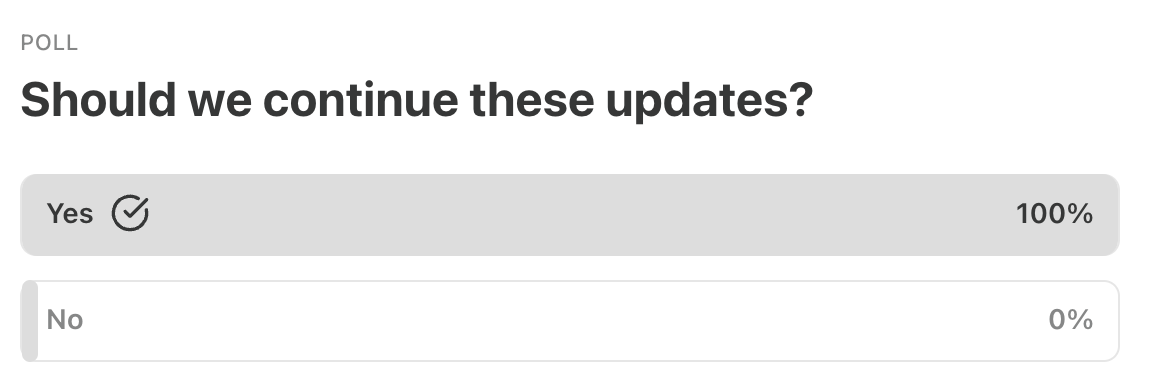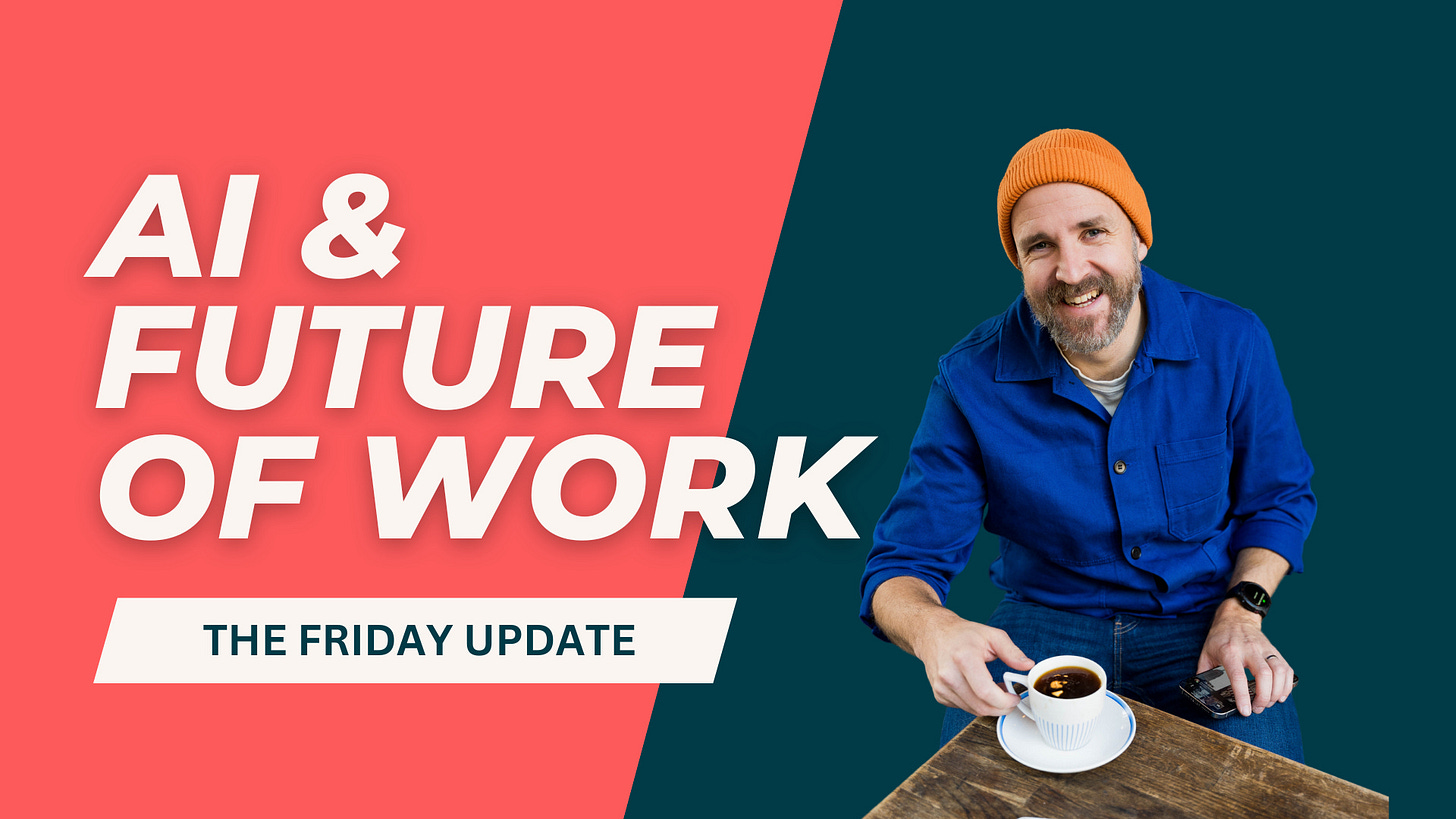AI & Future of work - 18 april 2025
Will recruiters exist in the future?
Welcome to FullStack HR, and an extra welcome to the 79 people who have signed up since last edition.
If you haven’t yet subscribed, join the 9100+ smart, curious and like-minded HR people by subscribing here:
Happy Friday
Quick note before the update: I skipped the full article this week (back next week!) but couldn’t let a short Easter week go by without sharing a few key things.
There’s a LOT happening in the AI + HR space right now.
Also, it was quite obvious what you all thought about these updates…
Also: I’ll be hosting a webinar in Swedish on April 28 at 12:00.
Free of charge, of course. I’ll unpack the latest AI developments and what they actually mean for HR.
Sign up and join in if you can!
1. OpenAI Launches o3 and o4-mini: Visual Reasoning Models
OpenAI introduced two new multimodal AI models, o3 and o4-mini, which can understand and reason across both text and visuals. These models are capable of tasks like analyzing images, interpreting data charts, running code, and even navigating digital interfaces. This marks a major step forward in building AI agents that can interact with complex, real-world environments in a much more human-like way.
Why it matters for HR: We should start exploring how these tools are reshaping what "knowledge work" even means. If these models can now process charts, resumes, and onboarding flows at speed and scale, we need to reevaluate the fundamentals of performance, output, and expertise. It pushes us to redefine what roles require human nuance and what tasks can be fully handed off to AI. It also opens the door to new job definitions and productivity benchmarks shaped by AI capabilities.
Read more
2. AI's Growing Role in Replacing Recruiters
Investor Victor Lazarte highlighted that AI is quickly evolving from an assistant to a full replacement in some recruitment functions. With tools now able to autonomously source, screen, and schedule candidates, many early-stage hiring tasks are becoming fully automated. This trend is accelerating as these tools become more accurate and accessible.
Why it matters for HR: We should take a hard look at which parts of our recruiting workflows are truly adding value and which ones can be confidently handed over to machines. This shift allows us to focus our time on areas where human intuition and relationship-building really matter. We can spend less time chasing logistics and more time championing candidate experience, cultural alignment, and strategic hiring decisions.
Read more
3. HR's Pivotal Role in AI Integration
At The AI+HI Project 2025, speakers emphasized, just as I have the last 2,5 years, that HR isn't just a passenger in the AI transformation, it’s expected to be in the driver's seat. With AI touching every department, HR is increasingly responsible for preparing the workforce, updating organizational norms, and managing transitions in how work gets done.
Why it matters for HR: I have talked about this over and over again. We should take this as a cue to step up and lead with both empathy and clarity. It’s not just about deploying the latest AI tool, it’s about creating the frameworks, guardrails, and confidence that allow teams to adopt these tools effectively. This means investing in training, governance, and clear communication around AI use.
Read more
4. Skills Are the New Currency
PwC’s Kimberly Jones shared insights on how AI is radically shifting the structure of work. Rather than relying on rigid job titles or fixed career paths, organizations are now turning to fluid skill matrices to form teams and allocate projects. Those who adapt quickly to this shift are gaining a major edge.
Why it matters for HR: We should rethink how we approach skills in our organizations, moving from static job descriptions to more dynamic skill taxonomies. This opens the door to new forms of internal mobility, more agile project staffing, and more personalized learning and development paths.
Read more
5. Reskilling Is No Longer Optional
With AI reshaping tasks across nearly every job function, reskilling is now a must-have. Leaders are being urged to make learning continuous, not occasional.
Why it matters for HR: Champion lifelong learning in our orgs is something we needed to start yesterday. Not just offering training, but making it a cultural expectation. That means aligning L&D with emerging tools and evolving job demands.
Read more
6. AI Colleagues Are Coming
The World Economic Forum explored how AI agents, software bots that perform work tasks are already becoming “colleagues” in some orgs. But managing them is still uncharted territory.
Why it matters for HR: Start thinking now about how we onboard, monitor, and integrate AI agents into teams. What does “performance management” look like for a bot? And how do we prepare humans to work alongside them?
Read more
7. The Problem Isn't That AI Will Take Our Jobs - It's That We're Doing Jobs That Shouldn't Exist
Talent acquisition futurist Matt Alder argues that AI is revealing a deeper issue in recruiting: many of the tasks we perform aren’t valuable, they’re just workarounds for broken systems. From ineffective screening methods to bloated admin processes, we’ve normalized inefficiencies instead of redesigning them. (See also no 2 this week for more thoughts on this one.)
Why it matters for HR: Rethink not just how we recruit, but why we do it the way we do. AI offers a chance to eliminate the noise and refocus on what really matters, human connection, fair assessment, and building meaningful teams. It’s time to move beyond optimizing broken systems and start redesigning from scratch.
Read more
8. Redefining the EVP in the Age of AI
Deloitte’s new Global Human Capital Trends report warns that AI’s “silent impacts” may significantly undermine the employee experience, introducing new layers of stress, increasing task complexity, reducing autonomy, and weakening opportunities for meaningful human connection. While AI is often promoted as a tool to enhance productivity and well-being, the reality for many employees may be a more demanding and less personal work environment unless we consciously design around these effects.
Why it matters for HR: Reassessing the EVP is essential to ensure it reflects AI’s actual influence on autonomy, learning, and well-being. As AI reshapes work environments, it's critical to design systems and experiences that support what truly attracts and retains talent instead of unintentionally diminishing it.
Read more
9. Strategic Workforce Planning in the Age of AI
A U.S. government study outlined how AI will impact public sector jobs, showing which roles are at risk and where skill gaps will emerge. The emphasis was on forward-looking planning.
Why it matters for HR: This calls for a strategic and proactive approach. AI isn’t just a tech initiative, it’s a workforce issue that demands clear visibility into which functions can be automated and where reskilling is most urgent. Mapping roles and capabilities with this in mind becomes essential to future-proof the organization.
Read more
10. The Line in the Sand of Work is AI
Last week I highlighted Shopify’sAI mandate and this week, Christopher Lind offers a thoughtful reflection and analysis on that shift. His take isn’t just about Shopify’s move, but about the broader implications of embedding AI into hiring, performance reviews, and day-to-day operations. He argues that this moment marks a dividing line in the world of work, where AI isn’t just an optional tool it’s quickly becoming the operating system for how work is structured, evaluated, and executed. Lind’s piece is less a report on Shopify and more a signal to everyone watching: this is the new terrain, and it’s moving fast.
Why it matters for HR: This piece is a solid companion to last week’s headline it adds thoughtful depth to the conversation. Lind helps unpack why Shopify’s move matters, not just that it happened. The future of talent evaluation and workforce design may soon depend on how well AI is embedded into core systems. This is a good read to understand what’s at stake: it’s not just about AI readiness it’s about redesigning operational expectations, setting clear accountability, and equipping people to navigate a fundamentally different world of work.
Read more



